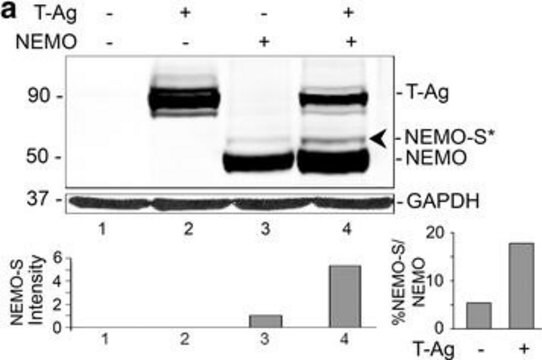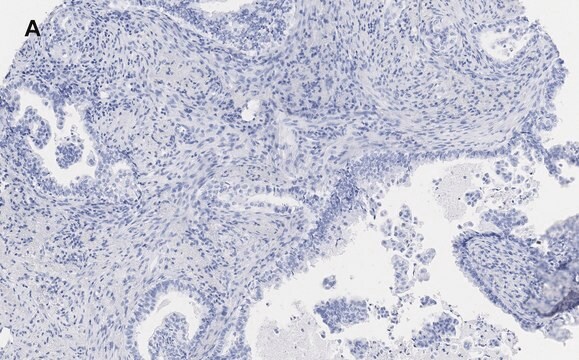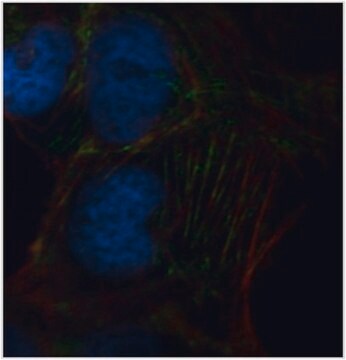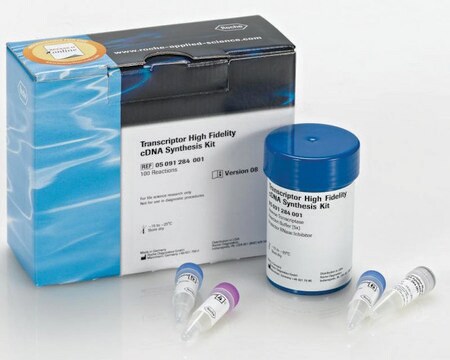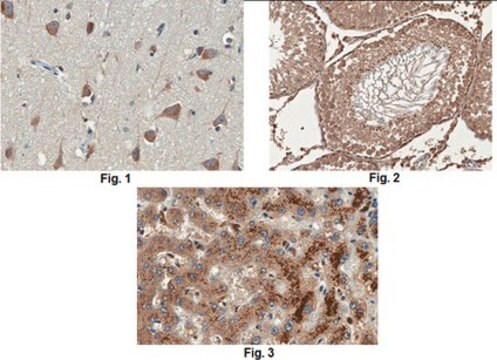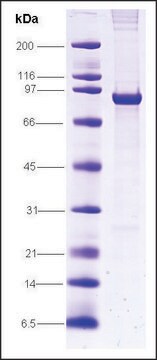MABS1221
Anti-GLEPP1/PTPRO Antibody, clone 5C11
clone 5C11, from mouse
Synonym(e):
Receptor-type tyrosine-protein phosphatase O, Glomerular epithelial protein 1, Osteoclastic transmembrane protein-tyrosine phosphatase, Protein tyrosine phosphatase U2, PTP-OC, PTP phi, PTP-U2, PTPase U2, R-PTP-O
About This Item
Empfohlene Produkte
Biologische Quelle
mouse
Qualitätsniveau
Antikörperform
purified antibody
Antikörper-Produkttyp
primary antibodies
Klon
5C11, monoclonal
Speziesreaktivität
human
Darf nicht reagieren mit
mouse, rat, rabbit
Methode(n)
electron microscopy: suitable
immunofluorescence: suitable
immunohistochemistry: suitable
Isotyp
IgG2bκ
NCBI-Hinterlegungsnummer
UniProt-Hinterlegungsnummer
Versandbedingung
wet ice
Posttranslationale Modifikation Target
unmodified
Angaben zum Gen
human ... PTPRO(5800)
Allgemeine Beschreibung
Spezifität
Immunogen
Anwendung
Immunofluorescence Analysis: Prior to purification, clone 5C11 hybridoma culture supernatant detected GLEPP1 (PTPRO) immunoreactivity predominantly on visceral glomerular epithelial cell (VGEC) foot processes along the glomerulus (GBM) in manthanol-fixed, adult human kidney cryosections, while altered GLEPP1 staining patterns were seen in kidney sections from individuals with congenital nephrotic syndrome of the Finnish type (CNF), minimal-change nephropathy (MCN), or Hodgkin’s disease (Sharif, K., et al. (1998). Exp. Nephrol. 6(3):234-244).
Electron Microscopy Analysis: Prior to purification, clone 5C11 hybridoma culture supernatant detected GLEPP1 (PTPRO) immunoreactivity at the apical aspect of the foot processes and the cell membrane of larger processes in paraformaldehyde-fixed, paraffin-embedded normal human adult kidney sections, while GLEPP1 immunoreactivity was seen redistributed from glomerulus (GBM) on the apical cell membrane of VGECs to microvilli on kidney sections from individuals with congenital nephrotic syndrome of the Finnish type (CNF) or minimal-change nephropathy (MCN) (Sharif, K., et al. (1998). Exp. Nephrol. 6(3):234-244).
Qualität
Immunohistochemistry Analysis: A 1:50 dilution of this antibody detected GLEPP1/PTPRO in human kidney tissue.
Zielbeschreibung
Physikalische Form
Sonstige Hinweise
Sie haben nicht das passende Produkt gefunden?
Probieren Sie unser Produkt-Auswahlhilfe. aus.
Lagerklassenschlüssel
12 - Non Combustible Liquids
WGK
WGK 1
Flammpunkt (°F)
Not applicable
Flammpunkt (°C)
Not applicable
Analysenzertifikate (COA)
Suchen Sie nach Analysenzertifikate (COA), indem Sie die Lot-/Chargennummer des Produkts eingeben. Lot- und Chargennummern sind auf dem Produktetikett hinter den Wörtern ‘Lot’ oder ‘Batch’ (Lot oder Charge) zu finden.
Besitzen Sie dieses Produkt bereits?
In der Dokumentenbibliothek finden Sie die Dokumentation zu den Produkten, die Sie kürzlich erworben haben.
Unser Team von Wissenschaftlern verfügt über Erfahrung in allen Forschungsbereichen einschließlich Life Science, Materialwissenschaften, chemischer Synthese, Chromatographie, Analytik und vielen mehr..
Setzen Sie sich mit dem technischen Dienst in Verbindung.